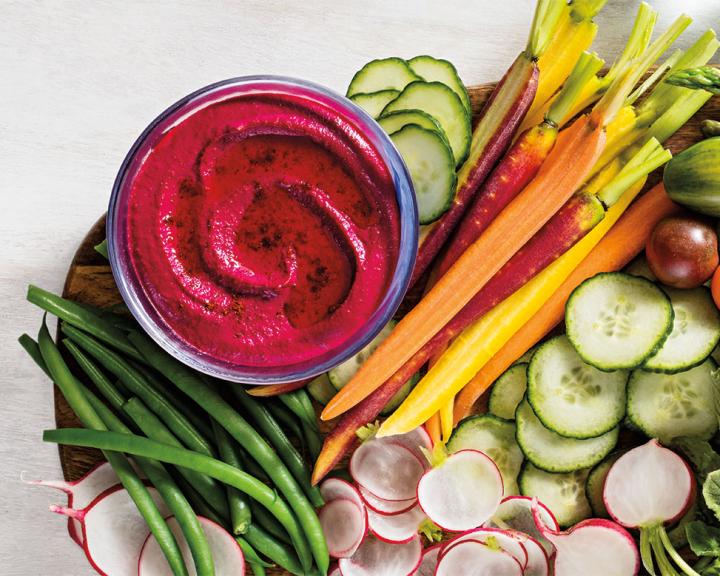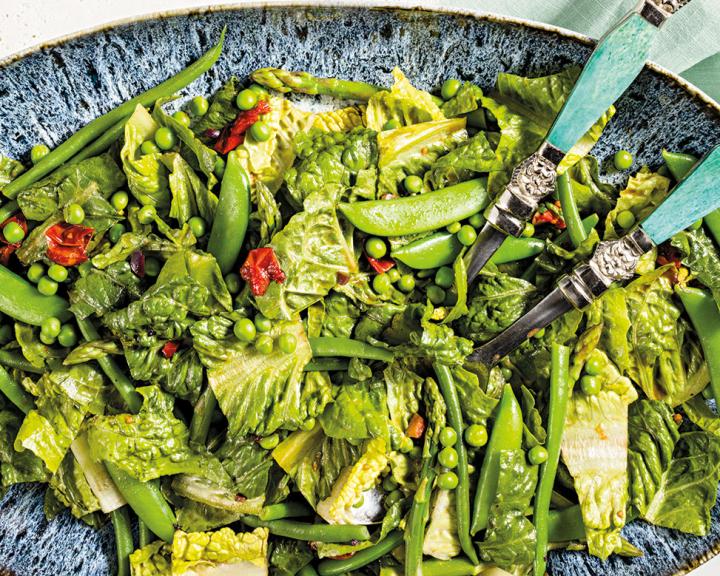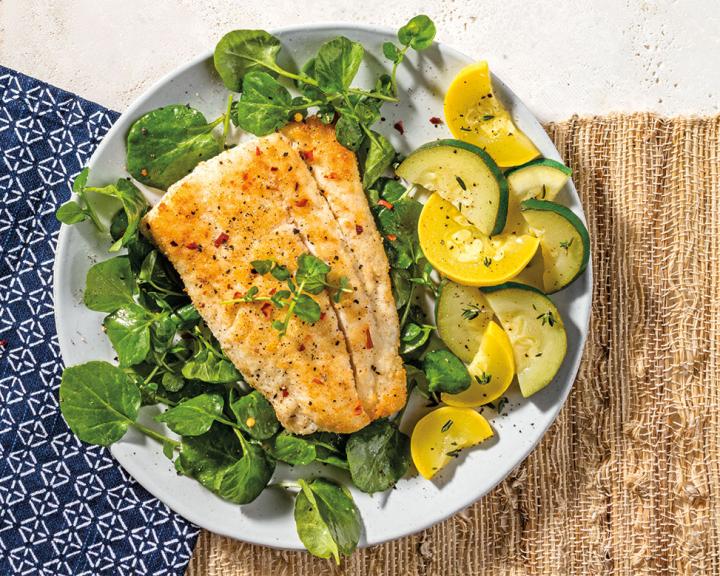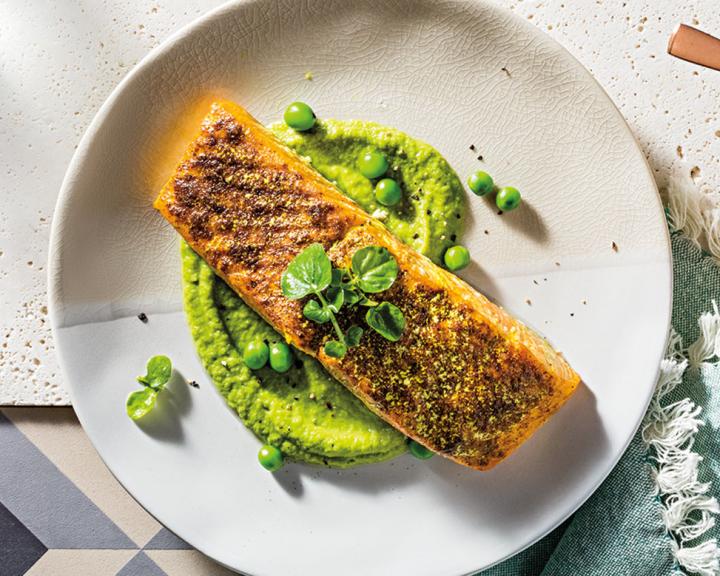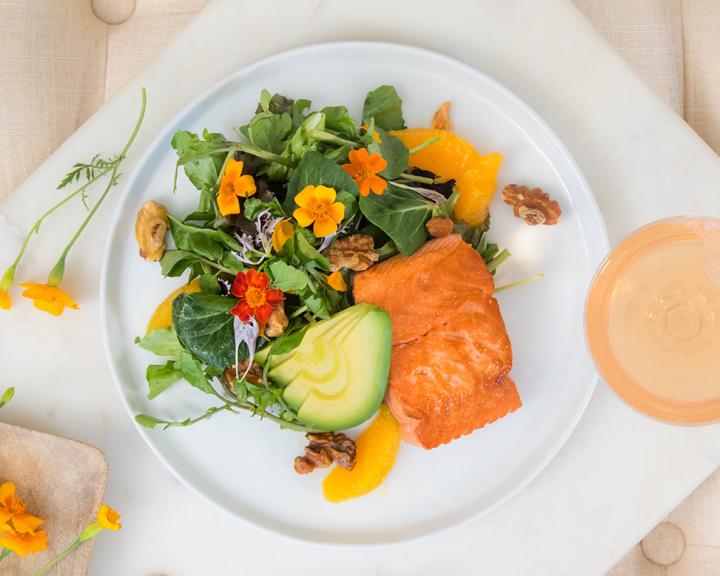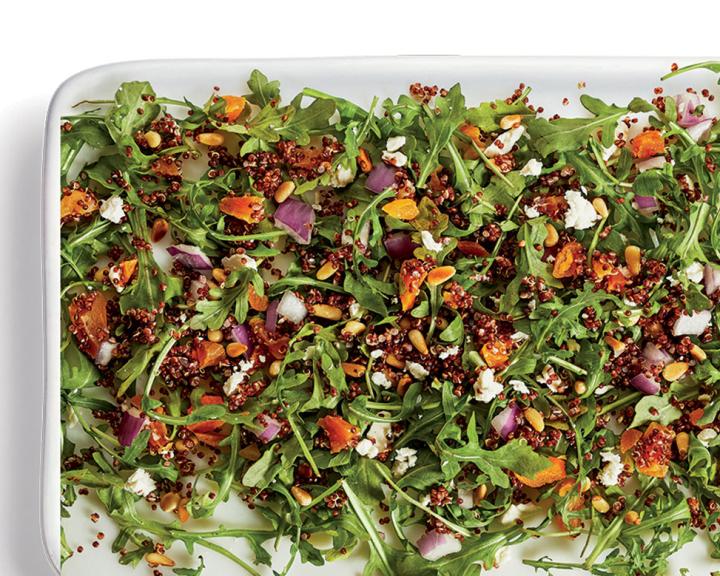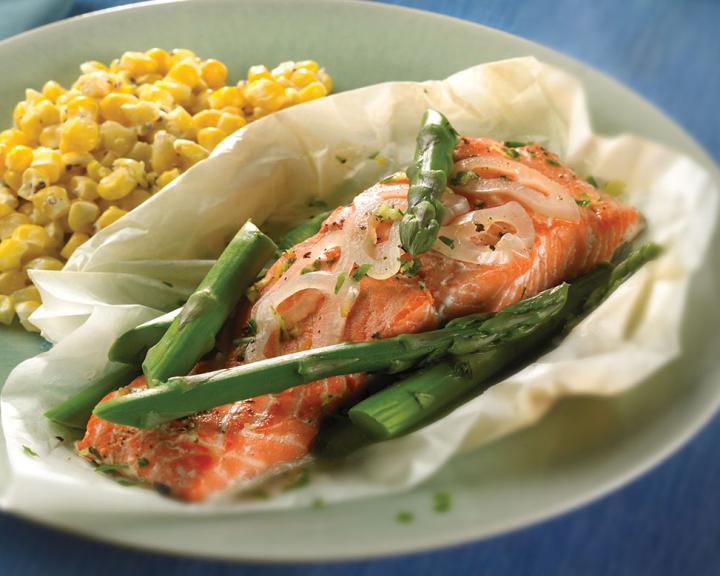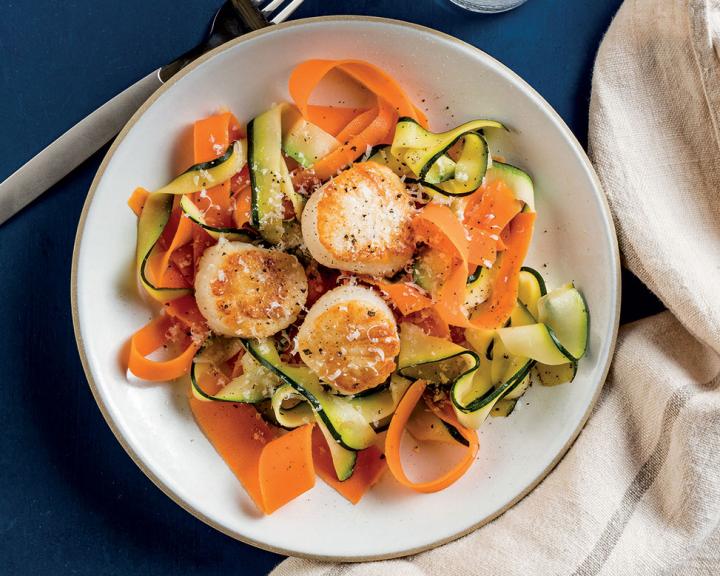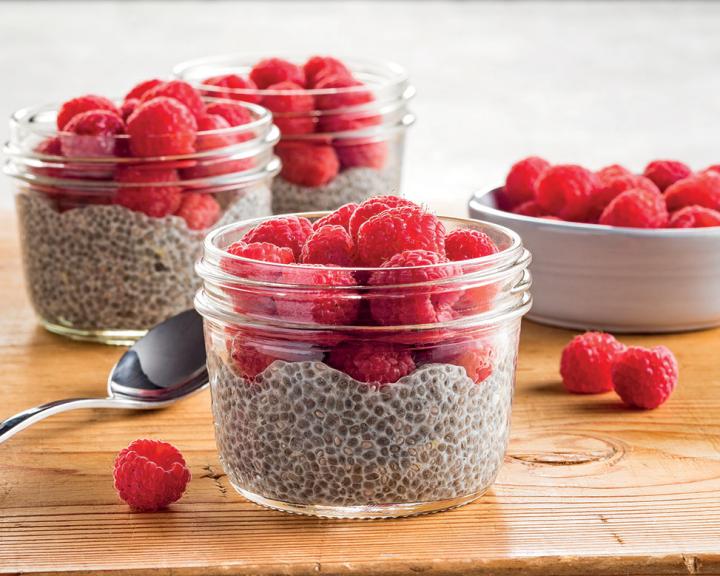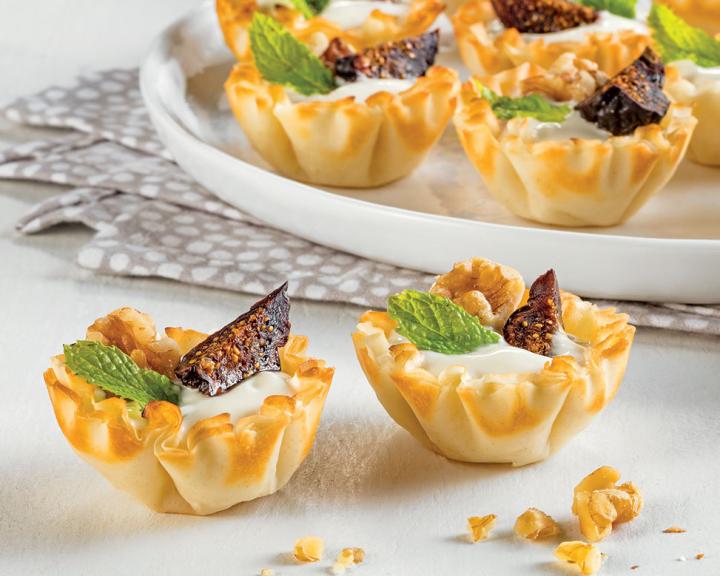How to Make Roasted Beet, Tahini, and Greek Yogurt Dip
Beautiful, fresh beets of any color take center stage in this unique vegetarian dish. To prepare raw beets, peel them, cut them into quarters, and boil or roast them until fork-tender. You can prepare large batches of beets at one time to use for this recipe, in salads, or to eat by themselves, drizzled with a little bit of olive oil and sprinkled with salt.
Find this recipe and more in the second edition our best-selling cookbook, The Mediterranean Diabetes Cookbook. To order directly from the American Diabetes Association, click here.
5 min prep time
16servings
2 tbsp
Step-By-Step Instructions:
- Place the beets in a food processor. Add the tahini, olive oil, salt, and yogurt to the food processor. Pulse until the mixture is smooth.
- Add water, tablespoon by tablespoon, to get an extra-creamy consistency (you should need less than 1/4 cup).
- Scrape down the sides of the food processor, then puree for 1 to 2 minutes, or until the dip is extremely creamy.
- Spoon onto a small, round dish, and serve immediately. (If desired, use the back of the spoon to create a smooth top on the dip and make dents in the top, filling them with olive oil.) Store in a lidded container in the refrigerator for up to a week.
Nutrition facts
16 Servings
-
Serving Size
2 tbsp
-
Amount per serving
Calories
40
- % Daily value*
-
Total Fat
3.5g
4%-
Saturated Fat
0.5g
3% -
Trans Fats
0g
-
Saturated Fat
-
Cholesterol
0mg
0% -
Sodium
85mg
4% -
Total Carbohydrate
2g
<1%-
Dietary Fiber
1g
4% -
Total Sugars
1g
-
Dietary Fiber
-
Protein
1g
-
Potassium
55mg
1%
